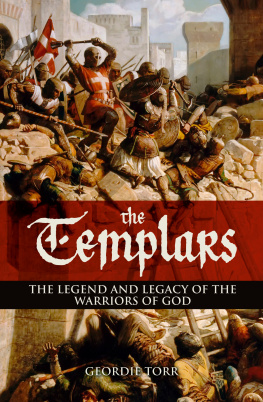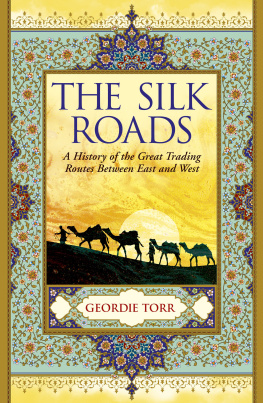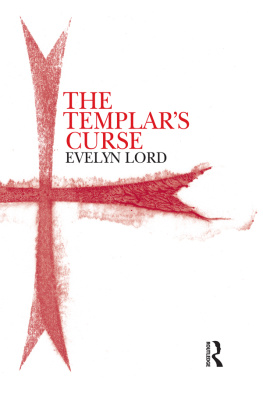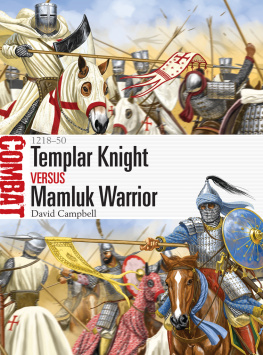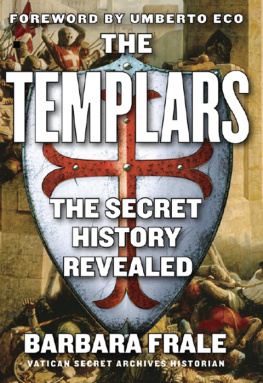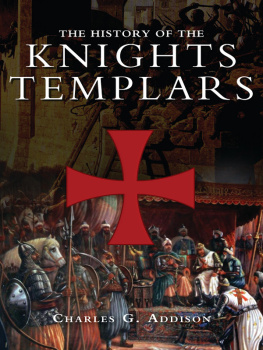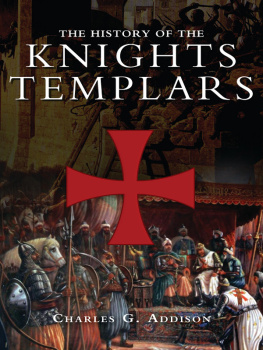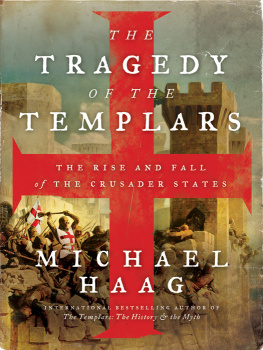Chapter 1
Introduction
As the eleventh century drew to a close, the Middle East was, as so often in its history, embroiled in a clash of civilizations. Christianity and Islam had become locked in a bloody battle for control of the region, intensified because it contained sites deeply holy to both sides.
With the spread of Islam across the Middle East jeopardizing access to the Holy Land for Christian pilgrims, the Church in Europe mobilized a vast army for the First Crusade in 1096. This brought Jerusalem under Christian control for the first time in almost 500 years, but the Crusaders hold on the holy city was precarious. War is one thing, occupation is another, and having gained control of Jerusalem and the adjacent territory (modern Israel/Palestine), the Crusaders were forced to deal with the harsh realities of defending their gains and guaranteeing the safety of the Christians who lived there and who came as pilgrims.
Into this maelstrom strode a new player an order of warrior monks, devout Christians sworn to defend their brethren. Their role quickly expanded from pilgrim bodyguards to protectors of the realm, with responsibility for maintaining a collection of castles on the frontiers. Such a combination of military duties with monasterial-type piety and austerity was not unique, but this was the first dedicated such order, and perhaps the most influential, in the Catholic Church.
Formed on Christmas Day 1119 in the Church of the Holy Sepulchre in Jerusalem, one of Christianitys most holy places, the order the Poor Fellow-Soldiers of Christ and the Temple of Solomon, or the Templars for short was a strange hybrid. It was, first and foremost, a military order, an extraterritorial private army whose only true loyalty was to God and the papacy. But it was also a religious order that built churches and held services; it was a business to some, the worlds first multinational corporation a significant landowner, a property developer, a sprawling web of agricultural, maritime and manufacturing operations whose profits were eventually ploughed back into the fight against the infidel; and it was a bank and financier, lending money to nobles, guarding royal treasure for kings and issuing travellers cheques to pilgrims.
Answerable only to the Pope, who gave the order extraordinary power through a range of special rights and privileges, the Templars attracted generous donations and eager recruits. Devout, well-respected religious men, they slowly became part of the fabric of medieval Europe. Templar houses, their local headquarters, could be found across the continent, leasing land to tenant farmers, running agricultural markets, feeding the poor.
On the battlefield, dressed in a distinctive uniform of a dark tunic and a white mantle with a red cross over the left breast, the Templar knights quickly achieved a reputation for honour, valour, bravery and ferocity in battle. However, even their efforts werent ultimately enough to resist the might of the Muslim armies, who were united by powerful military leaders such as Saladin, and the Crusaders including the Templars were eventually forced from the Holy Land once more.
With their exile from the Middle East, the Templars were unable to fulfil their primary duty. And then, suddenly, it all came to an end. Within the space of less than five years, the order went from being one of the most powerful organizations in Christendom to ceasing to exist. The Templars demise was brought about not by their Muslim enemies, but by their Christian allies, for a combination of unvoiced reasons that were primarily about money and power rather than the claimed religious misdemeanours. In October 1307, less than 200 years after the order was founded, Frances Templars were rounded up and arrested, followed by some who lived in other countries. Accused of numerous heretical crimes, many were tortured and executed. In 1312, the order was suppressed and in 1314, the last Templar Grand Master was burnt at the stake.
Such was the bewildering speed of the downfall that it inevitably led to speculation about the orders activities both before and after its dissolution. These rumours eventually developed into a full-blown mythology when members of the Freemasons wove the Templars into their own origin story, and ever since, that mythology has been embellished with more and more outlandish theories.
Since the late twentieth century, interest in the Templars alleged continuing existence and shadowy, clandestine influence on world affairs has gathered pace. Indeed, it seems that today, most peoples only knowledge of the Templars relates to conspiracies in which theyre supposedly involved and treasure theyre supposed to have hidden.
But their true story is as fascinating as the concocted one, taking in one of the most tumultuous periods in the history of Europe and the Middle East, a time of castles and knights, of epic battles and palace intrigue, of shifting alliances and terrible betrayals, which resonates down the centuries.
Chapter 2
Setting the Scene
To understand the origins of the Templars, its necessary to go back to around 800 years before the orders inception. Over those centuries, two key factors in particular were contributing to a world that would have a place for such an order: the custom of pilgrimage and the shifting sands of power in the Middle East.
Pilgrimage
The practice of pilgrimage whereby believers travel to holy places in search of enlightenment, forgiveness of sin or physical healing has been an integral part of religious life for almost as long as there have been religions. Within the Christian Church, its origins lie in the fourth century ce , when Church leaders began to encourage worshippers to visit sites considered holy by the Church as a route to salvation through the forgiveness of sins. God was generally considered to be eminently bribe-able: you could buy good fortune or even a passage to heaven by donating to religious causes or carrying out particularly holy acts. Chief among the latter was pilgrimage.
Some historians pinpoint the beginning of Christian pilgrimage to the 320s and 330s ce . Emperor Constantine who had converted to Christianity in 312 ce, the first Roman emperor to embrace the religion refurbished and extended existing pilgrim destinations and created new ones. His mother, Empress Helena, undertook a pilgrimage to Jerusalem herself in 326 ce . Imperial patronage of Christian pilgrimage meant that it increasingly became an important activity among the Roman elite.
There were important Christian shrines in Europe, such as the Church of St James at Santiago de Compostela in Spain and Canterbury Cathedral in England. Nonetheless, the prime destination for Christian pilgrims was the Holy Land, particularly Jerusalem.
Pilgrimage to the Holy Land provided believers with a tangible link to Jesus life and death. Among the more popular sites was the River Jordan, which offered the chance to re-enact Jesus baptism by John the Baptist, in the hope of receiving spiritual and even physically curative cleansing. Most revered of all, however, was the Church of the Holy Sepulchre in Jerusalem, located on Golgotha, the Hill of Calvary, which the New Testament identifies as the place where Jesus was crucified, buried and reborn. This church was first built over two sites by Constantine in about 326 ce .
When pilgrimages began, the Holy Land was under Christian rule, in the form of the Roman Empire or its successor, the Byzantine Empire. Even with Muslim expansion across the Middle East during the seventh century ce , local rulers typically permitted members of other religions to travel through their land on pilgrimages. Muslims had their own traditions of pilgrimage; a pilgrimage to Mecca was one of the five pillars of Islam. And Christian pilgrims were often welcomed as a valuable source of income pilgrimage was essentially a proto-tourism industry. Locals were always ready to make a dinar or two from the relatively helpless pilgrims, whether through admission fees, duties, the sale of privileges, protection money or simple extortion.

